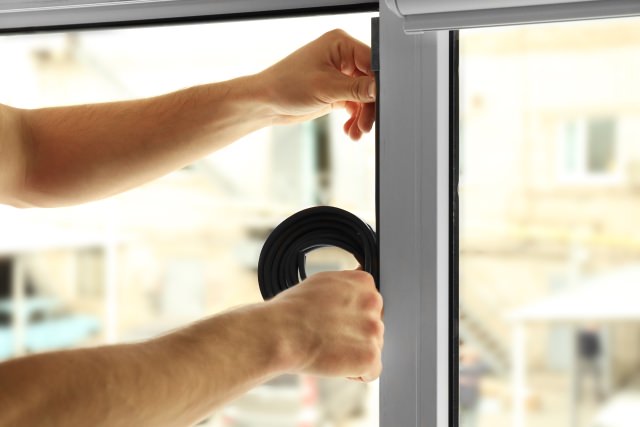Preventing Condensation and Maintaining Double-Glazed Windows
Investing in double glazing is rather a big decision and discovering condensation on the inside pane or outside pane or even inside the air gap between the two panes of glass of your double glazing units, can be a major concern.
While cleaning your windows and wiping them down regularly is important, even with the most vigilant window maintenance, condensation can still be an issue.
What is Condensation and Why is it a Bad Thing?
When air cools to its dew point through contact with a surface that is colder than the air, any airborne water vapour will condense to form a liquid. While windows in humid conditions are more susceptible to condensation, it does still occur even in cold conditions when there is relatively low humidity.
Condensation is more likely to form on single-pane windows due to the closer proximity of the outside temperature to the inside temperature. And while double glazing does mitigate this somewhat, it is still possible to get condensation in your units. Generally, condensation is more common in older units lacking regular window maintenance which have damaged, or sun perished window seals.
Allowing a build-up of condensation to sit in a sealed unit for a long time, will not only further reduce the lifespan of the window but it has the potential to form mildew and black mould, the spores of which can be extremely hazardous to one’s health.
Condensation on the Inside Windowpane
Internal condensation occurs when there is too much humidity in a room with little to no air circulation. This scenario is most often seen in kitchens and bathrooms. A low internal room temperature that creates a cold window surface can cause warm air outside the window to form condensation too.
To stay on top of condensation, use a cloth or towel to wipe the surface as soon as possible to prevent rotting wooden frames, damage and mould. Improving the circulation of the air in the room and keeping your rooms at more even temperatures will assist in reducing humidity, making it harder for condensation to form. Making use of a dehumidifier can also help to alleviate high moisture levels in your home if that is an issue where you live.

Installing an extractor fan in your kitchen and bathroom or opening the windows regularly to let the outside air inside, will help to balance out any moisture-rich air and prevent water vapour from circulating. Cover pots and pans in the kitchen with lids to reduce water vapour. Direct the vent pipe of a tumble dryer outside a window. You should only use the machine to dry damp clothing rather than wet clothes. This will help keep humidity levels lower.
Condensation on the Outside Windowpane
This happens far less frequently than on the inside windowpane and doesn’t necessarily mean that your double glazed unit is not working efficiently or requires additional window maintenance. When the external air is warmer than the glazed pane’s surface the dew point of the air becomes higher, this is usually at night or in the early morning, particularly if there is a clear sky and no wind.
By allowing more air or wind to flow past your windows, you can reduce condensation. You could also consider creating areas of shade shelters using tall trees, shrubs and plants to help retain the warmth to lessen condensation.
Condensation in the Air Gap
As with all things, even double glazed windows deteriorate with time. The seal around the two windowpanes creating the sealed unit will eventually start to crack and degrade and moisture will be able to creep in. How quickly this happens all depends on the age of the units, the quality of the build, the installation, the integrity of the seal and how well cared for they are.
Forgoing simple window maintenance and allowing condensation to regularly settle on the outside frame for long periods of time without wiping it away, will speed up the process of seal and bead damage causing them to deteriorate or loosen. Also, if there is any imperfection in the seal, the desiccant, a spacer bar made of highly absorptive material between the two panes of glass which sucks up any moisture in the air gap, can become quickly over-saturated and the moisture will begin to appear as condensation inside the air gap.
Beyond the appearance of condensation inside the panes of glass clouding your vision of the outside world and looking entirely undesirable, it also means that heat is escaping or entering your home, which defeats the purpose of having invested in double glazing.
Window Maintenance – To Repair or Replace?
The cause will ultimately determine the solution. Be sure to check if your windows are still under guarantee before taking on any repairs or replacements at your own expense. Reputable companies generally offer a 10 to 15-year warranty on their double-glazed units.
If the window frames are still in good condition, then you may just be able to have the sealed units repaired. This generally involves a process of drilling a hole into the spacer bar or glass pane unit and injecting it with a drying agent or desiccant to dry out the air and expel the condensation in the unit. Before re-sealing, an anti-fogging agent may also be used to prevent any further moisture build-up. The success of the repair will ultimately depend on the core issue.

If you can afford a replacement, this may be the best solution and provide better value for money and peace of mind in the long term.
In the unlikely event that you should experience condensation between the panes of your double glazing, our team here at Origin are always happy to assist with advice on the next steps to suit your budget.






